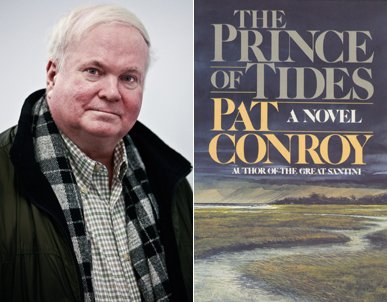Mixville shopping center’s movie ranch
By Phyl Van Ammers
Whole Foods will soon occupy a building in the strip mall on Glendale Boulevard. This is an important historic location without even an obscure plaque to show what was once there.
Along Glendale Boulevard, but closer to downtown and near the maw of the 2 Freeway, is the site of the Selig Polyscope movie studio. Around 1910, Selig recruited a cowboy who had ridden with Teddy Roosevelt’s Rough Riders when he was a teenager, served in the Boxer Rebellion, broke horses for the English in the Boer War, served as sheriff, U.S. Marshall, Texas Ranger, and who wanted only to live on the plains and own a ranch but felt he needed to raise the money himself and organized ranch shows. He and his horse Old Blue performed terrifying tricks in the ranch shows that later became part of the Tom Mix films. Read more
LIONEL’S LAMENT
By LIONEL ROLFE
As bombs were blowing up in Boston, I was sitting in my doctor’s office in Los Angeles’ Chinatown and he was telling me that he had no medicines to deal with my painful swollen legs, knees and feet.
Now I know that human misery is a constant, but when you’re experiencing it personally, so is the world. Bombers in Boston, sinkholes, tsunamis, wars, nuclear accidents, meteors hurling toward cities, earthquakes, mad cops running amok, ships crashing into shore as they navigate into port, all somehow equate with my increasingly wobbly legs.
Now I’ll grant there is no apparent connection between a major American city being under siege by a couple of mad bombers and the pain in my body. But it feels as if the world and the lives of all of us in it, are going bonkers in droves. The news is becoming madder by the day. Nothing is left to shock. Read more
The Hip Dictator and His Opponents
Leslie Evans
The Dictator’ Learning Curve: Inside the Global Battle for Democracy. William J. Dobson. New York: Doubleday, 2012. 341 pp.
Former Foreign Affairs editor William J. Dobson has been making the rounds of dictatorial states for the last half decade, interviewing the autocrats’ top functionaries as well as leaders of their democratic opposition. From Putin’s Russia to Mubarak’s Egypt, Mahathir Mohamad’s Malaysia, Chavez’s Venezuela, and, of course, the very model of the modern authoritarian state, China. He concludes that dictators have smartened up since the heavy handed days of yore, when they had to give themselves 99 percent in every election and sealed their borders, preventing people from leaving and trying to prevent information about the outside world from getting in.
The totalitarian regimes of the far right – National Socialism and fascism – were destroyed in World War II. Those of the left – the Soviet Union and its East European client states, Maoist China – collapsed at the beginning of the 1990s, or in the case of China, underwent major reforms. This has left North Korea as the sole indisputable exemplar of the totalitarian model. Cuba stands somewhere between there and the states labeled authoritarian. Read more
Two Views of the Israel-Palestine Conflict
We open this month’s Boryanabooks selection with two views of the seemingly endless clash between Israel, its Arab neighbors, and the Palestinians under Israeli occupation in the West Bank and Gaza. From Mohammad Arafat, a writer and resident of Gaza, we have an anguished account of his experiences during the Israeli invasion of 2009, of homes bulldozed and a neighbor’s daughter killed by an Israeli air strike. Leslie Evans offers a longer piece, criticizing much of the Western Left for placing all of the blame in this bitter ethnic conflict on the Israeli Jews. He traces Left animosity to Jewish national identity to the beginnings of the socialist movement in Europe and calls for support to the two-state solution to resolve the impasse.
LETTER FROM GAZA
Israel began to build its country in the Palestinian lands and began to control the Palestinian people at the beginning of 1948. It forced them to escape from their homes to other countries or cities. Many of those immigrants went to the neighboring countries like Syria, Lebanon and Jordan and the others went to Gaza and the West Bank. This occupation made many massacres in those lands, like Deir Yassin, where everyone was killed. The Israelis took about 70 percent of Palestine.
In 1994 the Israeli armies put Gaza and the West Bank under Palestinian authority. In spite of that, the occupation did not stop massacres inside Gaza and the West Bank. There were numerous invasions during the 2000 Intifada, but the most dangerous and terrible time was the 2008/2009 war on Gaza and its people. Read more
The Left and the Jews
Leslie Evans
From Ambivalence to Betrayal: The Left, the Jews, and Israel. Robert S. Wistrich. University of Nebraska Press, 2012. 625 pp.
Mr Deasy to Stephen Dedalus: “Ireland, they say, has the honour of
being the only country which never persecuted the Jews.
Do you know that? No. And do you know why?”
“Why, sir?” Stephen asked, beginning to smile.
“Because she never let them in,” Mr Deasy said solemnly.
A coughball of laughter leaped from his throat
dragging after it a rattling chain of phlegm.
-James Joyce, Ulysses
I first had to think much of anything about Israel, the Arab states on its borders, and the subset of Arabs who were beginning to be called Palestinians in June 1967 during the Six Day War. I was living in New York at the time, a member and staff writer for the Socialist Workers Party, the largest of the American Trotskyist groups, revolutionary Marxists who revered Lenin as well as Leon Trotsky. On June 5 war erupted between Israel and Egypt, Jordan, and Syria, three of the four countries on its borders, all vastly larger. Fighting on three fronts, the Israeli Jews in a few days defeated the massive Arab armies thrown against them.
The SWP leadership declared the party firmly on the Arab side, not shrinking from unreservedly endorsing the declared Arab war aims of destroying the Jewish state altogether. There were twenty-two Arab states and a single Jewish one. Forty-six years later the population of the Arab states stands at 350 million; Israel’s is 8 million, of whom only 6 million are Jews. Read more
The California Road Scholar Talks About Mining

Mural in the Martinez, California post office. "The Road to El Dorado, painted by Edith Hamlin and Maynard Dixon in 1939. http://livingnewdeal.berkeley.edu/projects/martinez-post-office-mural-the-road-to-eldorado-martinez-ca/
By Phyl Van Ammers
The quicksilver, gold and coalmines in this state helped create its cities and transformed its legal, political, economic and environmental landscape.
A petroglyph at Hickison Recreation Center in Nevada on Highway 50 shows stick figures that have enormous heads. They look like sticks with light bulbs on top. Behind them in one collection of stick figures a line represents mountain by inverted VVVVVV, an ideogram rather like saw teeth. “Sierra” in Spanish means both mountain range and saw. “Nevada” means snowfall, descent of snow, a heavy fall of snow, or white as snow.
A SOUTHERN VOICE FOR THE AGES
By Bob Vickrey
When his literary agent once asked best-selling writer Pat Conroy why there was not more sex included in his novels, he responded quickly, “Because my grandmother is still alive.”
When he tells that story at writing seminars and on the banquet circuit, there is always an eruption of laughter and applause in the room. Everyone in attendance fully understands the precarious minefield a writer navigates when it comes to family matters.
He has traditionally offered a serious challenge to young writers, however, as he encourages them to “be bold” and tell their stories courageously without worrying about who is in the audience. Read more
Pat Derby, Savior of Elephants, Dies
By LIONEL ROLFE
Pat Derby, founder of Ark2000, a 2000-acre refuge for elephants in the Mother Lode where at least one of the alleged pachyderm victims of the Los Angeles Zoo lived out her last days in happier refuge, has died.
Pat Derby died Friday at 69 from throat cancer, with her long-time companion Ed Stewart at her side. She was born June 7, 1943 and died Feb. 15.
She and her former husband Ted Derby were famed animal trainers in Hollywood and after working a stint in the late ‘60s with movie animal trainer Ralph Helfer who had a place in an isolated canyon north of Newhall, they opened up their own place, first in Placerita Canyon in Newhall. Read more
KCET Interviews Lionel Rolfe on His New Book, “Ari Mendelsohn”
KCET’s Mike Songsen both reviews Lionel Rolfe’s new book, The Misadventures of Ari Mendelsohn, and interviews the author, along with some musings about a fatal shooting just outside Songsen’s door, in a February 22 column in KCET’s online feature Departures.
Songsen concludes that “The book is chock full of self-deprecating jokes, while still possessing life-affirming passages like his early days as a journalist in the Central Coast or his quirky romance with a Bulgarian woman. A hybrid of Rolfe’s earlier books, this new collection reads quickly. The blend of humor and pathos within were clearly cathartic for the author and paint a fascinating account of the last half Century in Los Angeles. ” For the full story, see http://www.kcet.org/socal/departures/landofsunshine/la-letters/to-live-and-die-in-la-lionel-rolfe-literary-los-angeles.html








